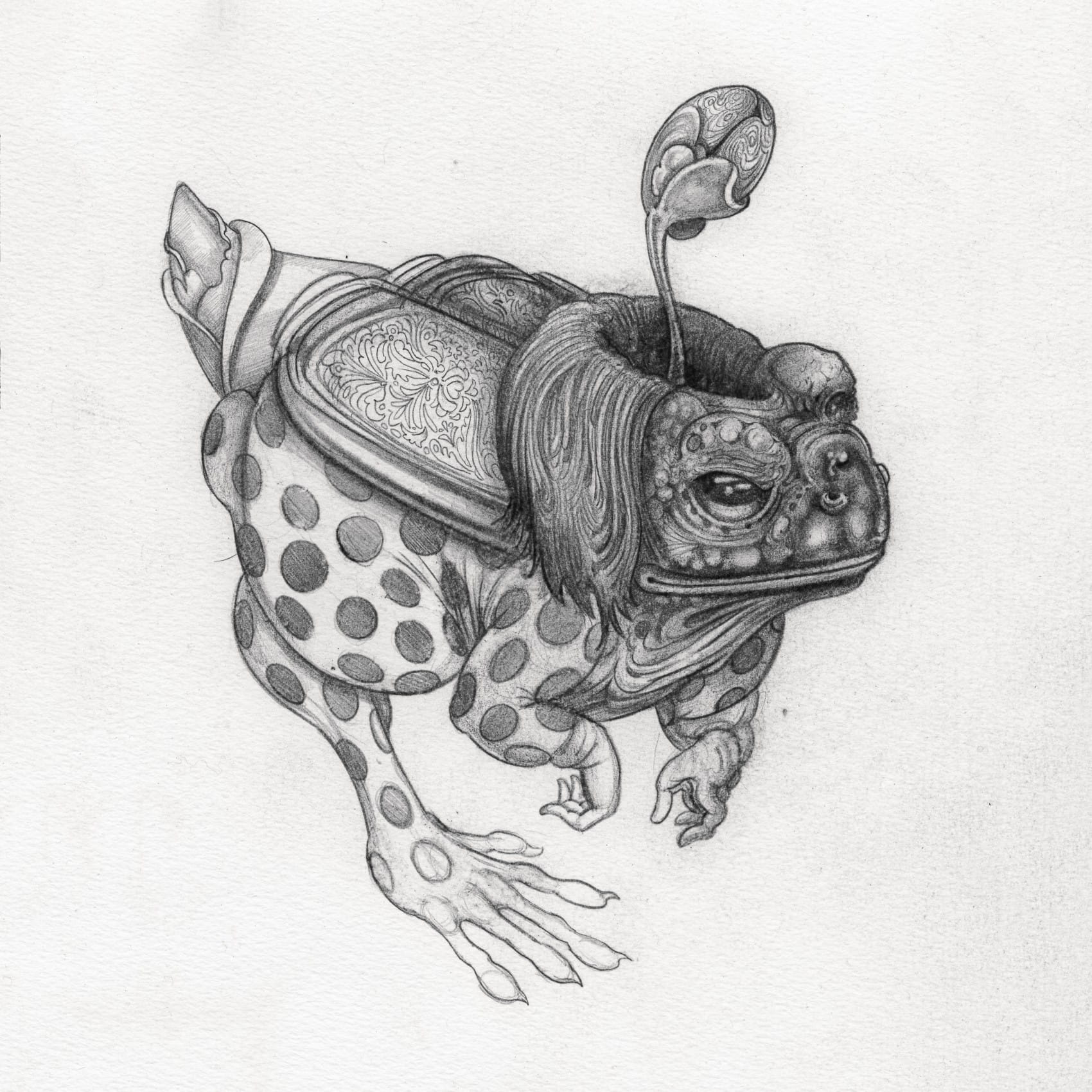The Kappa (河童), or “hungry stone” as it is called by River Folk, is a cryptomorph native only to Japan. Of course, as is known in most cryptozoological circles, as well as in some religious sects, the Kappa fled the Earth at the dawn of the 20th century in search of more magically hospitable environs. It was not until the tail end of the 21st century that the new ecology of Shanghai produced a being which filled a similar biological and folkloric niche.
While this new Shanghainese species was in no way genetically related to the Japanese water imp, the locals took to calling them by similar names, due to the fact that they share with their mystical forebears so many distinctive characteristics – most of all their mischievous and furtive nature.
These ingenious hybrids grew from what were originally a prolific species of toad living in the waters of Shanghai’s Huangpu river. Global destabilization resulted in the repeal of many environmental and ecological protections. After the year 2020, Shanghai’s pollution spiked and its biodiversity plummeted. Forced to adapt or die, many species in the region were forced into underground aquifers and caves where they encountered an entity which would later identify itself as The Chorus (咏帮). Species that collaborated with it were altered, but their survival was ensured.
These new Kappa were outfitted with various improvements. Photosensitive lignin plating allowed maximum energy absorption during the city’s brief and intermittent periods of sunlight, and the creatures could be seen in droves basking on the banks of Shanghai’s waterways on sunny mornings. This was one of the few times these creatures were exposed or vulnerable, as stored energy could be used to modify a complex system of chromatophores on the skin’s surface, completely cloaking the creatures from sight when submerged in liquid. This particular adaptation proved to be a mercy to the burgeoning species, whose meat was voraciously sought after in Shanghai’s culinary milieu.
Their nervous systems took on a bizarre, external appearance; dangling from the end of long stalks which emerge from a divet in the creatures’ heads. This shallow cranial vessel is filled with a silicone based algal suspension, which seems to serve as a highly sensitive conductive material. These “sensory bulbs” (莲髓) are known to send and receive information on low-bandwidth wifi channels, though current methods have been unable to decrypt the contents of the messages. They are hailed as being particularly tasty, and some even ascribe magical properties to their preparation and consumption.
While the activities of their namesakes are no longer known to humans (now shrouded in some distant pocket of Megrim), the Shanghainese Kappa (埔童) does indeed keep some of its antecedents’ traditions alive. Children are often reported missing, and garishly colored safety bulletins are posted near the Huangpu’s litter-strewn shores.
Originally published in the “Nine” Zine that accompanied the gallery exhibition in October, 2018. Fragments were posted to the Patreon in the preceeding months. It is unknown if the illustration was ever completed.
Related Readings
Mezzo-Nanite — Bestiary
The Peach Archivist, AD 10788 — Fragments
